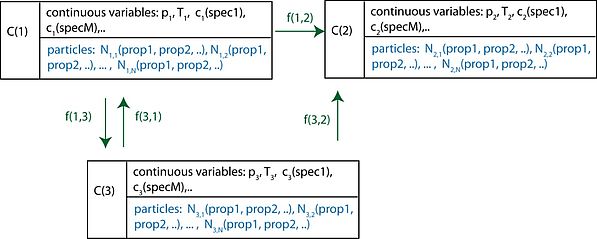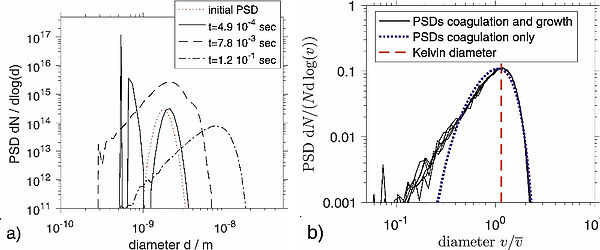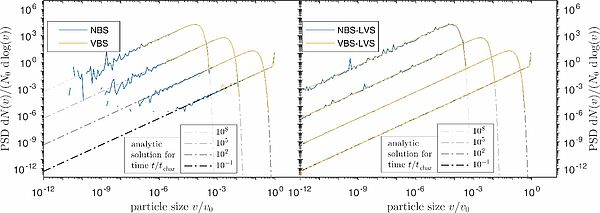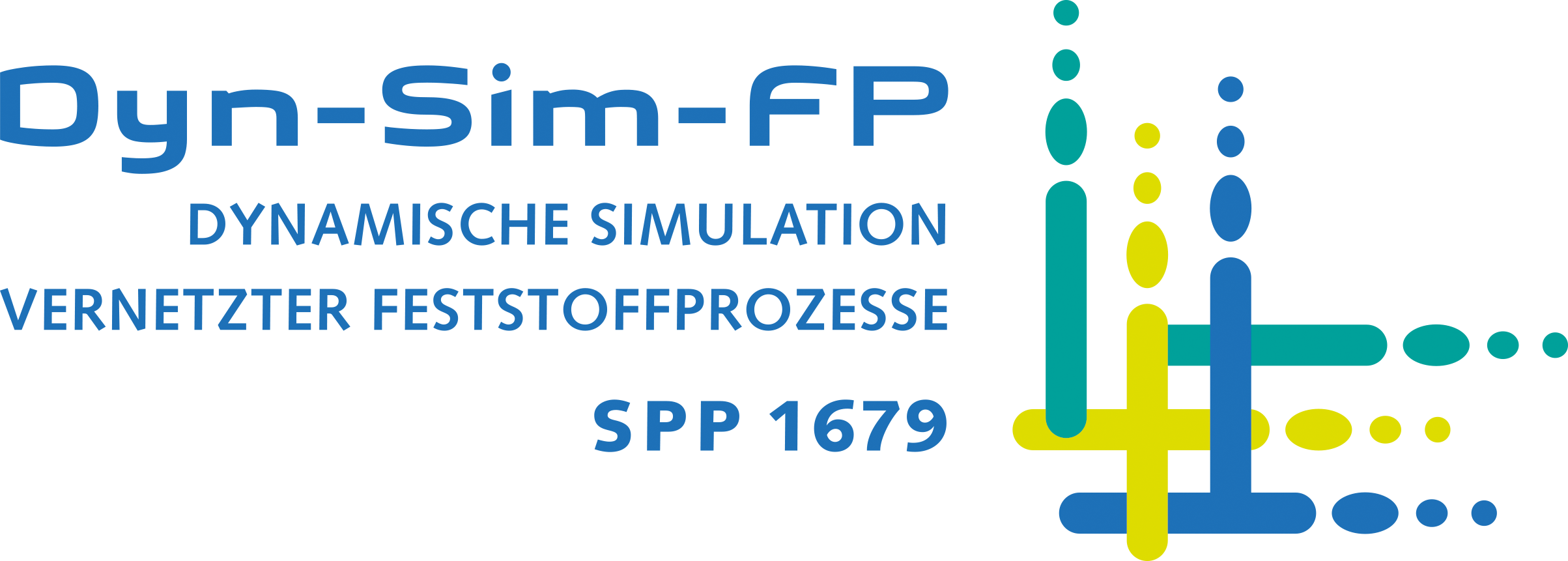Interconnected multivariate population balances by means of Monte Carlo methods
- Institute:
Institut für Nanostrukturtechnik, Universität Duisburg-Essen
- Project leader:
Dr.-Ing. Prof. Dr.-Ing. F.E. Kruis, Universität Duisburg-Essen
- Researcher:
Dipl.-Phys. G. Kotalczyk, Universität Duisburg-Essen
Project goal
The size evolution of particles is relevant for many fields of science and engineering such as gas-to-particle conversion processes, combustion processes, material synthesis, flue gas cleaning technology, process engineering etc. The dynamic solution of the particle size distribution can be performed by means of Population Balance Equations (PBEs). The Monte Carlo (MC) method is a stochastic simulation method which solves the PBEs. Its stochastic and discrete nature makes it ideally suited to handle discrete events. In contrast to other methods (like moments method), the MC methods do not require any a priori information of the PSD, such as the shape of the distribution. The MC methods allow the inclusion of other particle properties such as diameter, charge, composition, morphology, etc. (multivariate properties) without additional computational costs - in contrast to sectional methods.
The goal of this work is to develop stochastic numerical methods for the simulation of a multivariate disperse phase in the framework of a flowsheet-oriented simulation system based on the sequential modular approach. A compartmental system (see figure 1) will be set up in which each compartment contains a large number of simulation particles and in which the MC intercompartmental particle exchange will be done in a probabilistic way, using hopping constraints.
1) wird entwickelt, in dem der Partikelaustausch zwischen den Kompartimenten mittels stochast

Recent results
Mechanisms which change particle properties in a dynamic flowsheet simulation are nucleation, growth/dissolution, coagulation and breakage. Transport as well as equipment functions such as sieving, mixing, sorting etc. can be simply converted in probability functions modeling the particle flow from one compartment to the other. The MC description of these functions leads to a change in the number of simulation particles, so that strategies are required which readjust the number of simulation particles guaranteeing the desired accuracy. In the first period we concentrated on MC simulation of nucleation in combination with coagulation, whereas in the second period we also included growth/dissolution coupled to the continuous phase. Figure 2 shows simulation results for systems exhibiting all of these coupled mechanisms (coagulation, nucleation and growth (resp. evaporation)), which describes the particle synthesis from the gaseous phase.

Furthermore, a MC formulation for breakage has been developed and benchmarked. Figure 3 displays the advantages of the novel formulation.

Further work schedule
The parallel merging and splitting algorithms developed will be essential for dealing with transport between compartments, planned for the 3rd period. Also a compartmental model of a stirred media mill and crystallization processes will be set up, based on the MC description of the simultaneous coagulation, nucleation, breakage and growth (resp. evaporation). Exemplary flowsheet simulations will be set up for these processes.


